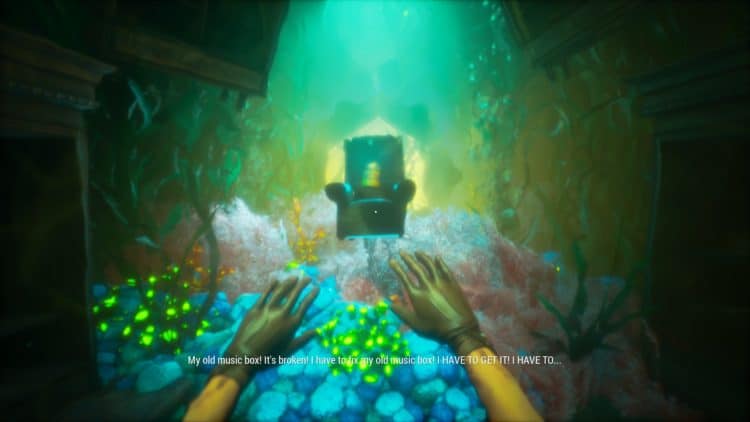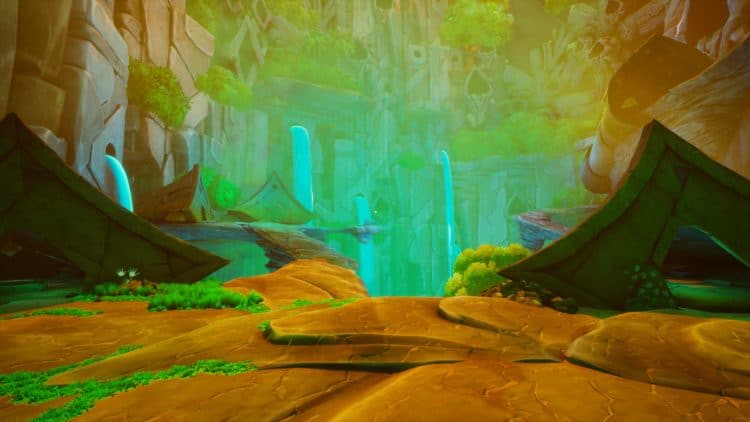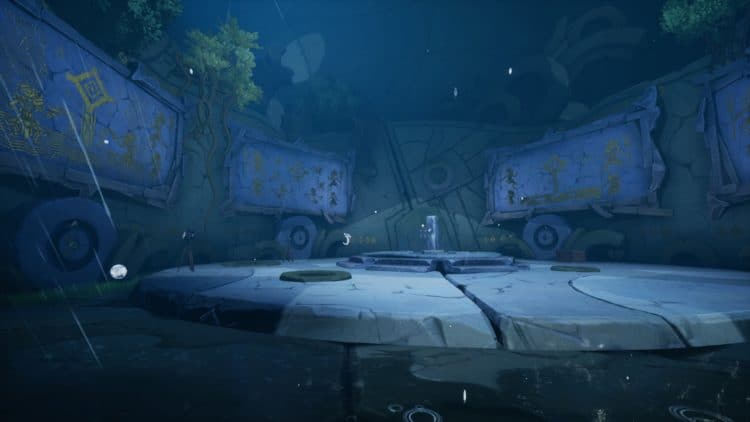
First-person adventure games are often almost like movies. They love to focus on story and characters, but these are typically major challenges for obvious reasons. You’ll likely know exactly where the plot of Call of the Sea plot is headed within the first hour or so, as its narrative focus has been explored to death at this point. But its exquisite world design, extremely strong writing, excellent voice performances, and powerful visuals make it a pleasure to play. Even if the puzzle design can leave a bit to be desired at times.
Call of the Sea, despite the strength of its aforementioned writing, actually begins with a bit of a textbook example of how not to handle exposition. The main character, Norah, dreams about swimming in the ocean (yeah, you know what this game is about already) and wakes up shortly after. She rises from her bed and the game’s premise vomits forth from her jaws like a freight train smashing through a wooden barrier. She has a mysterious illness and her husband Harry, while on an expedition to find a cure, goes missing. Norah receives a package in the mail containing a key and dagger, along with vague instructions that lead her to seek passage to a small island West of Tahiti where men fear to tread.
Upon making landfall, Norah discovers that Harry and his crew have indeed been there. She finds each of their campsites and slowly learns exactly what they’ve been through by finding letters and documents strewn about. Norah talks to herself a fair amount but, unlike that bit of exposition at the beginning, it doesn’t feel awkward or out of place. Her voice actress, industry veteran Cissy Jones, does a wonderful job bringing the character to life and is an integral part of the game’s narrative successes. She’ll also occasionally find unsent letters to her that Harry left behind, which are semi-animated and voiced by the always terrific Yuri Lowenthal. By the end of the game, I felt a certain amount of investment in their relationship even though I knew precisely where the game was headed.

Open the door etc. etc.
Call of the Sea takes place over six chapters, each with different areas. Many of these are surprisingly large and typically task you with scouring the area for information that you’ll use to solve the game’s puzzles. Norah is a talented artist, and every clue you find that’s relevant to a puzzle gets sketched into her notebook. Therefore, most of the chapters play out in a similar fashion. You reach a new area, explore it until there’s nothing left to find, and then solve each of the puzzles. However, the level design is uniformly excellent. The areas are clearly put-together and memorable, making it easy to get around. As the game goes on, it occasionally changes things up in surprising ways as well.
You control Norah from a first-person perspective in Call of the Sea and can walk around, interact with objects, and occasionally pick things up. Some of the puzzles can require you to cover a fair bit of ground too, which doesn’t typically get annoying, but can occasionally be a little dull. For instance, one puzzle leads you throughout a large cavern with multiple floors. This situation could have taken forever, but the puzzle in question is easy enough to understand that it’s not that much of a problem.
Overall, the puzzle quality in Call of the Sea is good — for the most part. A lot of the puzzles revolve around operating some specific mechanism that doesn’t make much sense, such as dials you have to flip and the like. Some of them, however, leave you with no idea of how they work or what you’re doing. You’ll need to mess around with them until you finally figure it out. To the game’s credit, nearly every puzzle gives you the information you need to solve everything. Paying attention also goes a long way.

Wait, what?
There is one puzzle in Call of the Sea that I found completely unsolvable, however. It requires Norah to piece together several details, but after scouring the area, I only ever found a single bit of vague information that explained how on earth I was supposed to utilize the puzzle’s specific mechanism. I probably spent over an hour trying to make sense of it, only to come up short. Perhaps I missed something, but this single puzzle made for a markedly worse game experience. Somehow, I solved it by accident after randomly turning dials. This was miraculous due to there being four of them with four settings each, meaning that the probability of me being able to correctly BS it without actually solving the puzzle was low.
After I accidentally happened upon the solution, the door opened and I spent a few minutes trying to work it backward in order to try and understand what I was supposed to do. Unfortunately, I wasn’t able to figure it out and I still haven’t the faintest clue as to how I was supposed to do it. Thankfully, this was an outlier. The game’s final puzzle was a high point, with a multi-step process made up of several smaller puzzles that came together in a satisfying way. I’m glad I got lucky enough to bypass the problematic one, or I would have missed some cool things.
To put it bluntly, Call of the Sea is a gorgeous game. It has more of a cartoony style to it, but the levels are highly atmospheric and feature lovely vistas and beautiful use of vibrant color. The areas also feel lived-in and believable. This is certainly the kind of game where you’ll stop and gawk at the scenery every now and again. Although, it doesn’t last all that long, as this is a six- to seven-hour game. Regardless, I feel that it’s exactly as long as it needs to be. Plus, there are two endings that you can pick via a binary choice which give you something extra to chew on. The narrative beats might be insanely obvious and that one puzzle is awful, but I enjoyed this game. It has fantastic world design, a wonderful presentation, and plenty of memorable moments. I just wish I knew what was up with those stupid dials.

Call of the Sea might have an overly familiar premise and some less-than-stellar puzzles, but it’s a gorgeous, enjoyable game boosted by strong production values and involved world design.





More Stories
Firefighting Simulator – The Squad review — Through the fire and the shame
Maid of Sker review — Death in the slow lane
PHOGS! review – It’s a dog-help-dog world out there